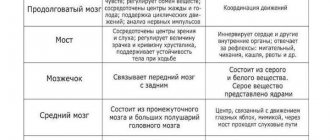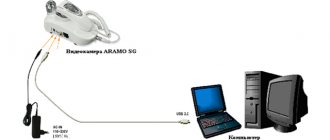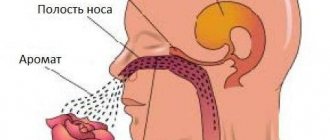Functions of the diencephalon (conducting and reflex).
Read:- A) intermediate inheritance
- A. Ischemic stroke in the brainstem along the vertebrobasilar system. Alternating Weber syndrome
- D) accompanied by severe damage to the brain substance with disorders of consciousness, convulsions and paralysis
- Hb. Its varieties and functions
- I – IV PAIRS OF NERVES OF THE BRAIN
- IX-XII PAIRS OF NERVES OF THE BRAIN
- LEA proteins. Classification, functions performed.
- V-VIII PAIRS OF NERVES OF THE BRAIN
- V2: Topic 7.1 Review of the structure of the brain. Base of the brain. Exit of cranial nerves (CN). Stages of development. Medulla oblongata, pons.
- V2: Topic 7.5 Cloak. Centers of the first and second signaling systems. Functional systems of the brain.
The diencephalon (lat. diencephalon) is a section of the brain. The diencephalon is located above the midbrain, under the corpus callosum.
During embryogenesis, the diencephalon is formed at the back of the first brain vesicle. In front and above, the diencephalon borders on the forebrain, and below and behind on the midbrain.
The structures of the diencephalon surround the third ventricle.
The diencephalon is divided into:
· Thalamic brain (lat. thalamencephalon)
Subthalamic region or hypothalamus (lat. hypothalamus)
Third ventricle, which is the cavity of the diencephalon
The thalamic brain has three parts:
· Optic thalamus (Thalamus)
· Suprathalamic region (Epithalamus)
Transthalamic region (Metalamus)
The thalamus or visual thalamus (lat. thalamus) is a paired ovoid-shaped formation that consists mainly of gray matter. The medial and superior surfaces are free, and the lateral-inferior surface communicates with other parts of the brain. The thalamus is the subcortical center of all types of sensitivity (pain, temperature, tactile, proprioceptive). The thalamus is the switching point for all sensory pathways coming from extero-, proprio- and interoreceptors.
Epithalamus
The epithalamus or suprathalamic region (lat. epithalamus) is located in the upper posterior part of the thalamus. The epithalamus forms the pineal body (epiphysis), which is attached to the thalamus by means of leashes. The pineal gland is an endocrine gland that is responsible for synchronizing the body's biorhythms with the rhythms of the environment.
Metathalamus
The metathalamus or retrothalamic region (lat. metathalamus) is formed by paired medial and lateral geniculate bodies lying behind the thalamus. The medial geniculate body is located behind the thalamic cushion. It is the subcortical center of hearing. The lateral geniculate body is located inferior to the pillow. It is the subcortical center of vision.
Hypothalamus
The hypothalamus or subthalamic region is located below the thalamus. The hypothalamus includes the mammillary bodies, which are the subcortical centers of smell, the pituitary gland, the optic chiasm, the second pair of cranial nerves, and the gray tubercle, which is the autonomic center of metabolism and thermoregulation. The hypothalamus contains nuclei that control endocrine and autonomic processes.
The hypothalamus is divided into four parts:
Anterior hypothalamic part
Intermediate hypothalamic part
Posterior hypothalamic part
Dorsolateral hypothalamic part
Third ventricle
The third ventricle (lat. ventriculus tertius) is the cavity of the diencephalon. It is a narrow slit-like space located in the sagittal plane.
The third ventricle has five walls:
The lateral wall is represented by the visual thalamus
The lower wall is represented by the subthalamic region and partially by the cerebral peduncles
The posterior wall is represented by the posterior commissure and the pineal recess
The upper wall is represented by the choroid of the third ventricle
The anterior wall is represented by the columns of the arch, the anterior commissure and the terminal plate
Functions of the diencephalon
· Center of pain and pleasure
Center for neurohumoral regulation
· Center of thirst, hunger, satiety
Sleep and Wake Center
Thermoregulation center
Date added: 2015-12-15 | Views: 910 | Copyright infringement
Previous8Next






